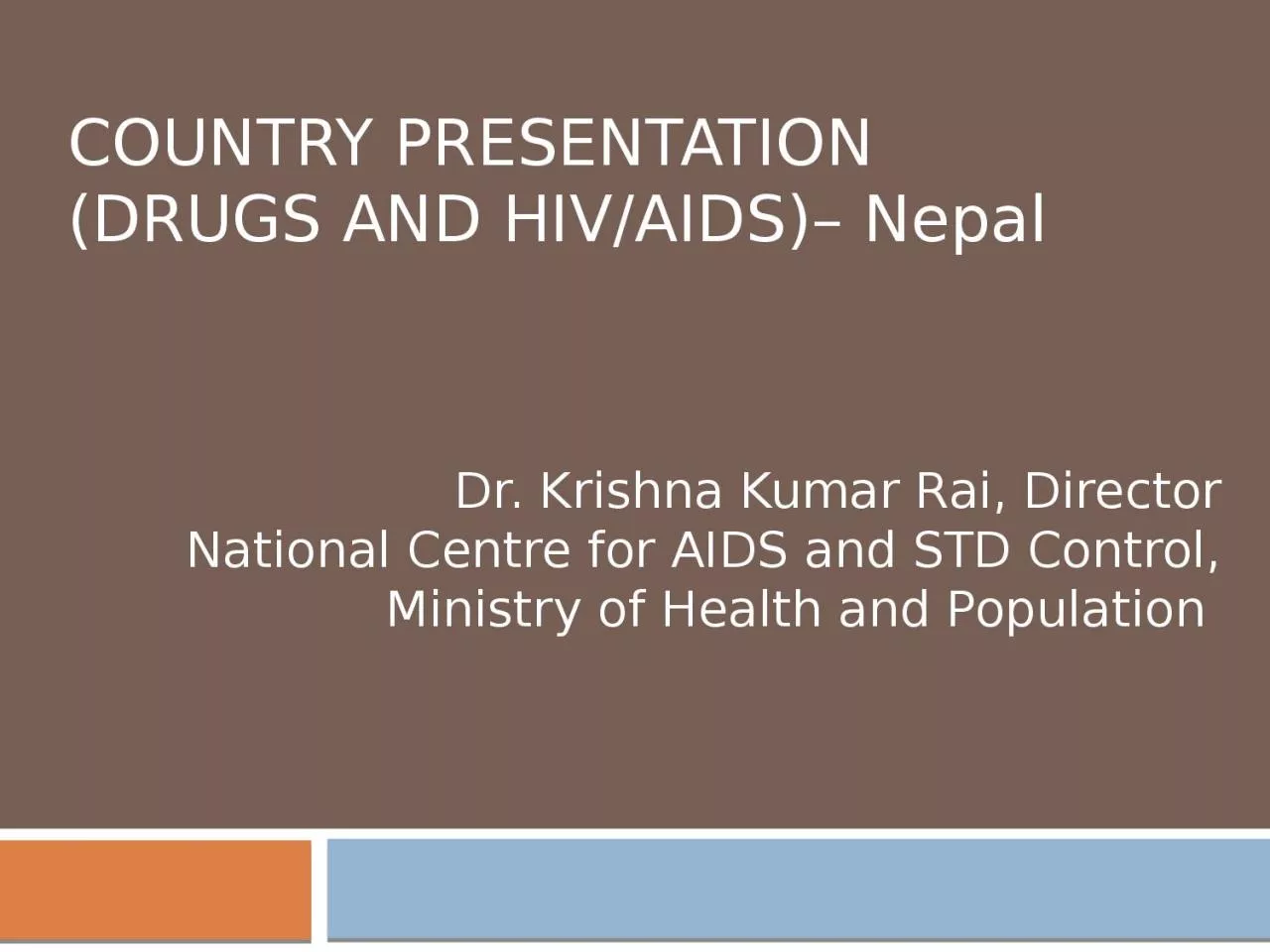

Nepal Dr Krishna Kumar Rai Director National Centre for AIDS and STD Control Ministry of Health and Population National structures in response to HIVAIDS National AIDS Council NAC headed by the Prime Minister ID: 1033819
Download Presentation The PPT/PDF document "Country Presentation (Drugs and HIV/AIDS..." is the property of its rightful owner. Permission is granted to download and print the materials on this web site for personal, non-commercial use only, and to display it on your personal computer provided you do not modify the materials and that you retain all copyright notices contained in the materials. By downloading content from our website, you accept the terms of this agreement.
1. Country Presentation (Drugs and HIV/AIDS)– NepalDr. Krishna Kumar Rai, DirectorNational Centre for AIDS and STD Control,Ministry of Health and Population
2. National structures in response to HIV/AIDSNational AIDS Council (NAC) headed by the Prime MinisterNational HIV/AIDS and STI Control Board (HSCB)National Centre for AIDS and STD Control (NCASC) headed by a Director (under Ministry of Health and Population)HIV/AIDS program is P1 program /integrated programDistrict AIDS Coordination Committees (DACC) in 75 districts, DHO is the secretariat of DACC
3. HIV situation in Nepal, 2011Total HIV infection reported as of 17 September, 2011-18535 (Male-11964, Female-6571)Heterosexual transmission is predominant-- More than 80% infections are spread through sexual transmissionInjecting drug users, female sex workers and their clients, MSM, mobile and migrant popn are the key sub populations are the most at risk population - driving the epidemic
4. Injecting Drug UsersProfile and behavioural characteristicsEstimated number – 33, 74261.6% aged between 20-29 years59.6 % unmarried41.7% have completed 10 or more years of schoolingPrevalence of HIV among IDU in Kathmandu Valley is 6.3% and 4.6% in Pokhara
5. Narcotic policy (because of HIV transmission related components-harm reduction) has been recognised and mainstreamed in MOHA policy and related strategy (i.e. Drug Control Strategy 2010).Emphasis is given on reducing stigma and discrimination in all related activities—sensitization, awareness campaign.Narcotic Policy
6. Ongoing Country Efforts National Drug Control Policy -operational New Drug Control Law - upcomingDrug Control Strategy -endorsedThe Guidelines for rehab centres -operationalOST Guideline is on the final stage-under translation
7. Ongoing Country Efforts Implementing the National HIV/AIDS Strategy 2011-2015 Health System strengthening for treatment, care and support –under GFATM support/pool fund capacity development, training –under implementation.Community System Strengthening- under implementation, HIV prevention, community care support programs in partnership with civil society ---funded by Global Fund Round 7, Global Fund Round 10 and through Sector Wide Approach –supported by pooled partners (World Bank, DFID, AusAID)
8. Contribution of the project in the National responseCoordination in setting up Harm Reduction & Methadone Maintenance program and ensuring a smooth transition to a government led mechanism supported by Global Fund and Pooled FundsTechnical partnership in involving civil society, IDU network in terms of HIV prevention of transmission, Direct service to over 8000 IDUs through, Comprehensive Harm Reduction services and Methadone TreatmentAdvocacy for conducive policy environment to drug users in the countryOverall coordinating role between the Ministry of Home Affairs and Ministry of Health and Population
9. Way ForwardCollaboration- strengthen regional cooperation through knowledge & experience sharing Develop Regional Harm Reduction Policy, Strategy and advocacy guidelinesProvide lead TA role in research as well as in program development in terms of new dynamics among adolescents and young drug users (under 18)Explore and invite new donors in the South east Asia region with the changing economic context,----- economically rising country like China (also high prevalence of HBV)
10. THANK YOU